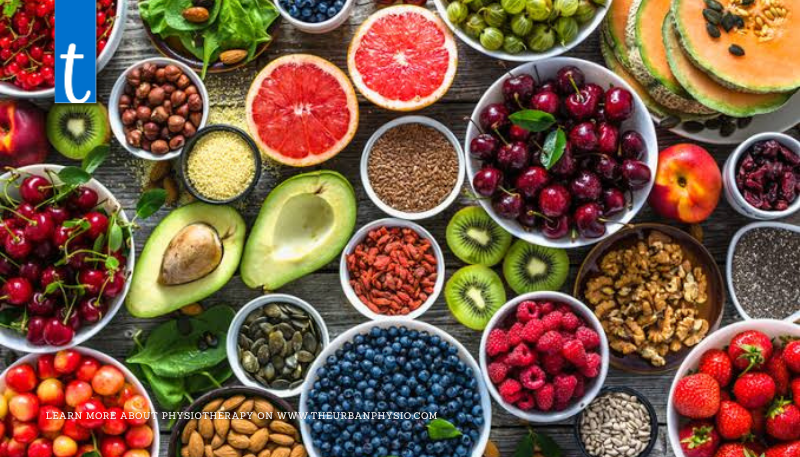In the world of nutrition, some foods stand out for their high nutrient density, earning the label “superfoods.” This term refers to a category of foods packed with vitamins, minerals, and antioxidants, all of which can benefit your health in extraordinary ways. However, while superfoods offer excellent health benefits, they aren’t miracle cures. This post breaks down popular superfoods, their unique properties, and practical ways to incorporate them into your diet.
Understanding Superfoods: What Qualifies?
A food becomes “super” due to its dense nutrient content and health-boosting properties. Superfoods often provide benefits like immune support, anti-inflammatory effects, and improved energy levels. While no single food can offer everything your body needs, superfoods are a great way to enhance your nutrient intake and support overall health.
Some criteria that often classify a food as “super” include:
High levels of essential nutrients: Such as vitamins, minerals, and antioxidants.
Low calorie count: Many superfoods offer a lot of nutrition without a high-calorie load.
Health benefits backed by research: Studies often highlight the specific health benefits of superfoods, such as boosting immunity or reducing inflammation.
Popular Superfoods and Their Benefits
Let’s dive into some popular superfoods, exploring what makes each of them nutritionally exceptional and how they contribute to overall health.
1. Chia Seeds
Nutritional Profile: Chia seeds are rich in omega-3 fatty acids, fiber, and protein.
Health Benefits: The omega-3s support heart health, the fiber aids digestion, and the protein content helps with muscle repair and growth. They also contain calcium, magnesium, and manganese, essential minerals for bone health.
How to Use: Chia seeds can be easily added to smoothies, yogurts, or oatmeal. When soaked in water, they form a gel-like texture, making them a great addition to puddings and drinks.
2. Spirulina
Nutritional Profile: This blue-green algae is packed with protein, essential amino acids, and vitamins like B12. Spirulina is also rich in antioxidants, including phycocyanin, which gives it a blue-green color and provides anti-inflammatory effects.
Health Benefits: Spirulina supports detoxification, boosts energy levels, and has potential immune-boosting properties. It’s known for its high protein content, making it popular among vegetarians and vegans.
How to Use: Spirulina is available in powder form, which can be mixed into smoothies, juices, or even energy bars. Its strong flavor may take some getting used to, so start with small amounts.
3. Kale
Nutritional Profile: Known for being nutrient-dense, kale is rich in vitamins A, C, and K, along with calcium, potassium, and fiber. It’s also packed with antioxidants like quercetin and kaempferol, which have anti-inflammatory properties.
Health Benefits: Kale supports eye health, immune function, and bone health. Its high fiber content promotes digestion and helps manage cholesterol levels.
How to Use: Kale can be eaten raw in salads, blended into smoothies, or sautéed with garlic for a nutritious side dish. It also makes a great base for soups and stews or can be baked into kale chips.
4. Berries (Blueberries, Acai, Goji)
Nutritional Profile: Berries are high in antioxidants like anthocyanins, which help protect cells from oxidative stress. They’re also low in calories but high in fiber, vitamins, and minerals.
Health Benefits: Berries are known for their anti-inflammatory properties, and research has shown they can support brain health, improve memory, and reduce the risk of heart disease.
How to Use: Fresh or frozen berries can be added to cereals, smoothies, salads, or yogurt. They make a delicious, low-calorie snack and can be blended into sauces or baked into healthy desserts.
5. Turmeric
Nutritional Profile: The primary active compound in turmeric, curcumin, has powerful anti-inflammatory and antioxidant properties.
Health Benefits: Turmeric can help reduce inflammation, relieve joint pain, and improve immune function. Some studies suggest it may also benefit brain health by increasing brain-derived neurotrophic factor (BDNF).
How to Use: Turmeric can be added to teas, curries, or soups. For best absorption, combine turmeric with black pepper, which contains piperine, an alkaloid that enhances curcumin absorption.
Incorporating Superfoods into Your Diet
While it may be tempting to add all of these foods to your diet at once, it’s best to start small and gradually incorporate them into your meals. Here are some easy ways to do so:
Smoothies: Chia seeds, spirulina powder, and berries make excellent smoothie additions. Try blending them with leafy greens, almond milk, and a banana for a nutrient-packed drink.
Salads and Bowls: Kale, berries, and seeds can be combined in a salad or grain bowl. Add a healthy dressing for a delicious meal rich in vitamins and minerals.
Daily Teas or Lattes: Adding turmeric to a warm drink like tea or golden milk provides anti-inflammatory benefits in a tasty, comforting way.
Snacks: Superfoods like berries and chia seeds can make a healthy snack when paired with yogurt or added to a homemade trail mix.
Balancing Superfoods with a Varied Diet
It’s easy to get excited about superfoods, but remember, a balanced diet is essential. No single food can replace a well-rounded eating plan. Try to combine superfoods with a variety of fruits, vegetables, whole grains, proteins, and healthy fats.
Key Points to Remember:
Diverse Diet: While superfoods are great, eating a variety of foods ensures a broad spectrum of nutrients.
Moderation: Overconsumption of any food, including superfoods, may lead to adverse effects. For example, excessive chia seeds can cause digestive discomfort.
Sourcing: Aim to choose organic options when possible, especially for superfoods that tend to absorb pesticides, like berries.
The Bottom Line
Superfoods are a great addition to any diet, providing concentrated nutrients and health benefits. Whether you’re looking to improve digestion, boost energy, or simply add variety, superfoods can be a delicious way to support your health goals. By incorporating them thoughtfully into meals, you can maximize their benefits while enjoying flavorful, nutrient-dense foods.
A supercharged diet, however, is only one component of a healthy lifestyle. Remember to balance nutrition with regular physical activity, adequate sleep, and stress management for optimal well-being.





